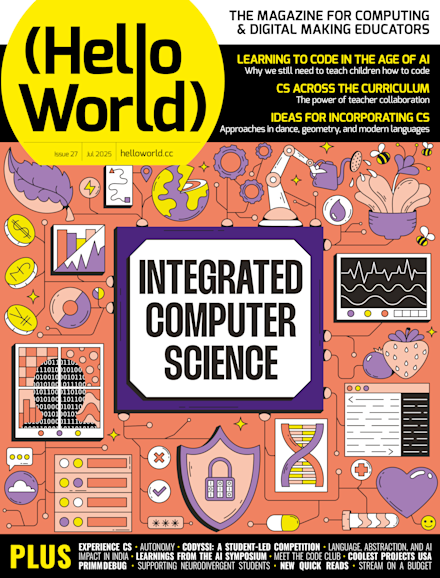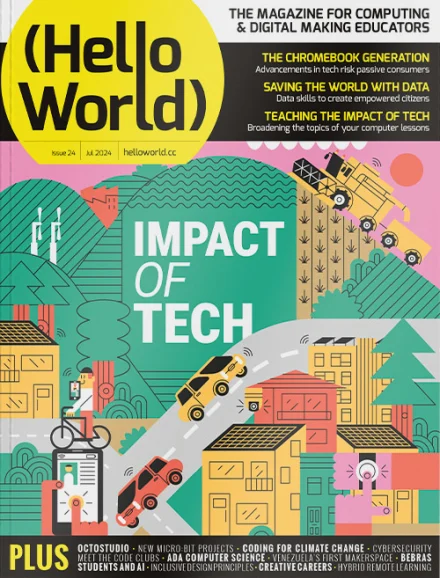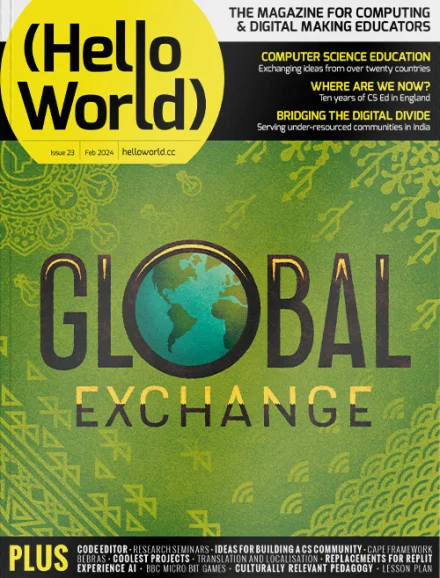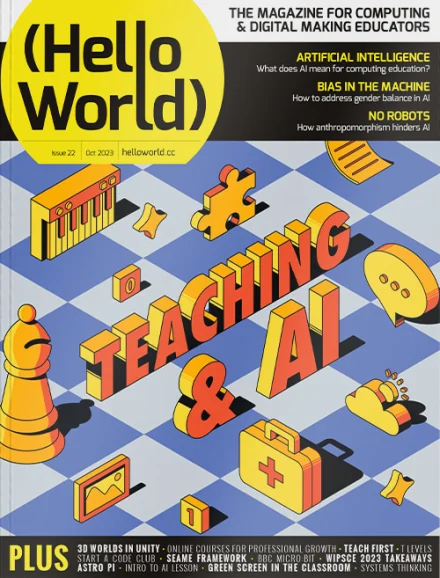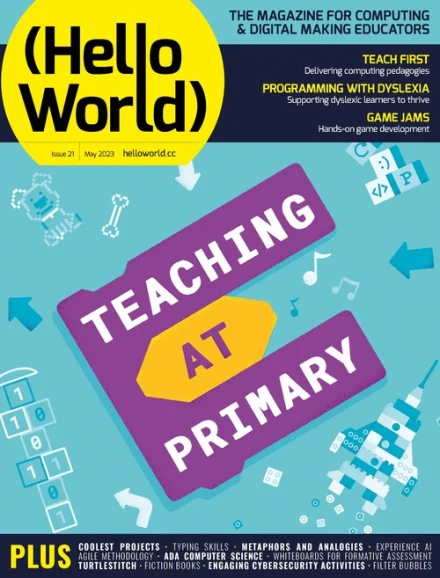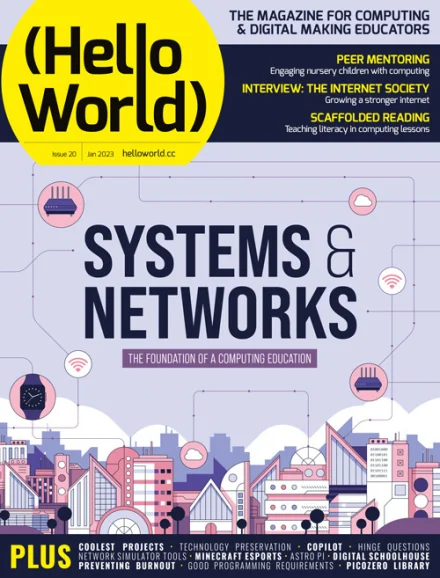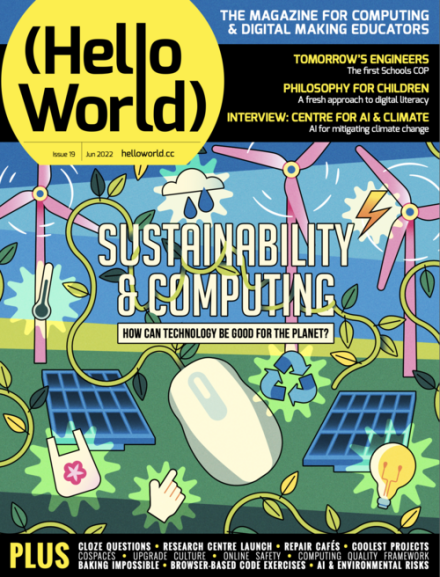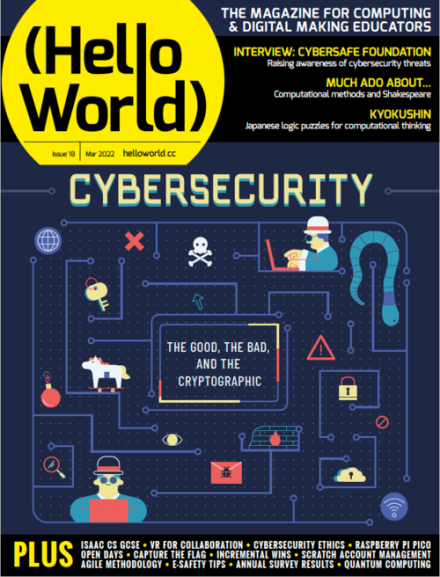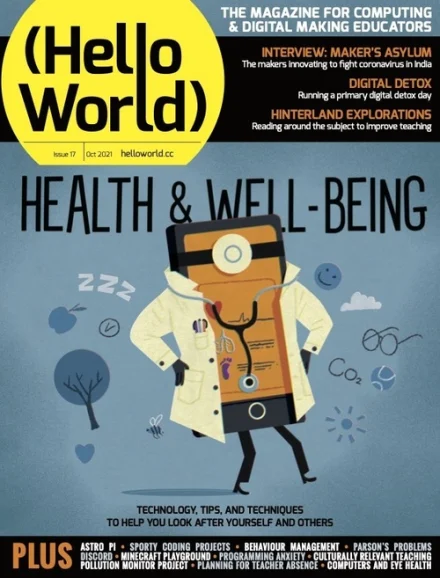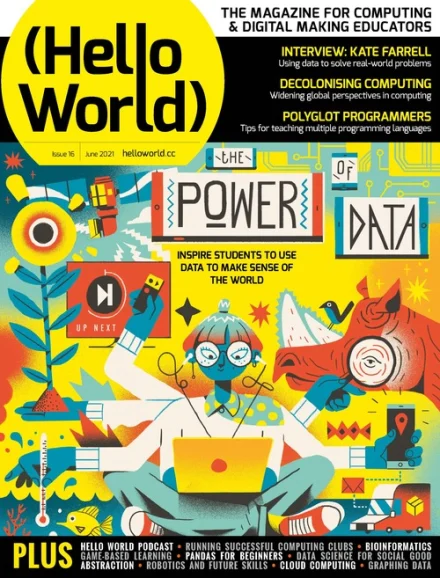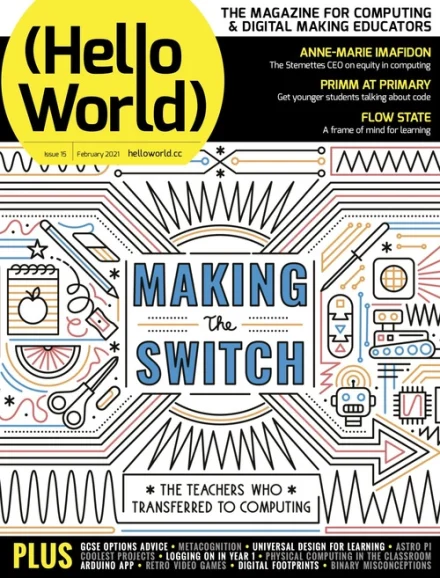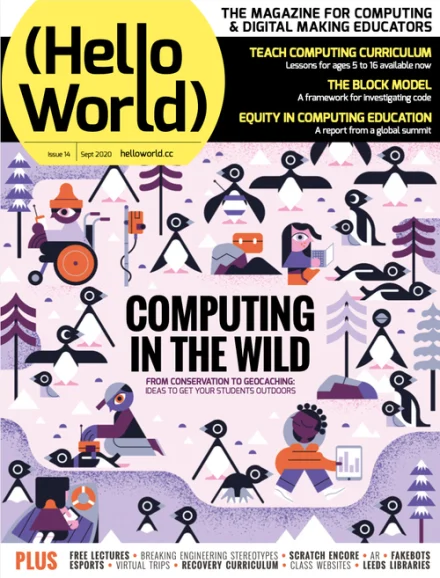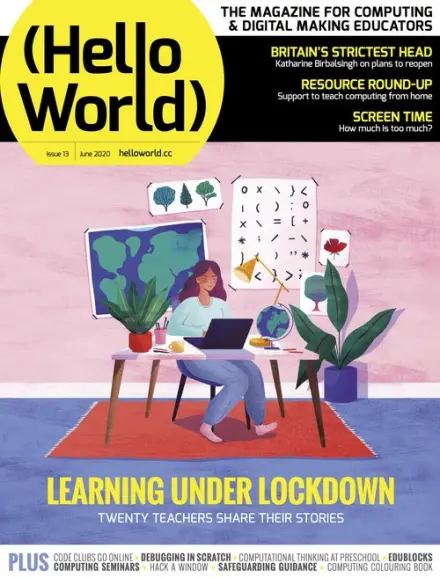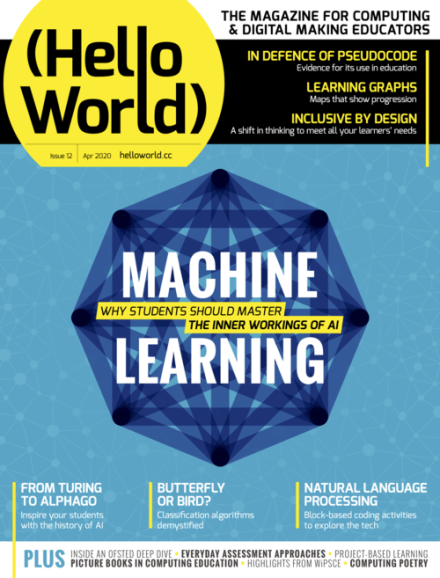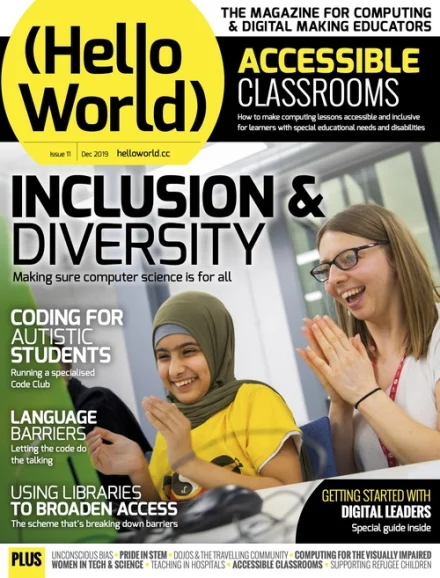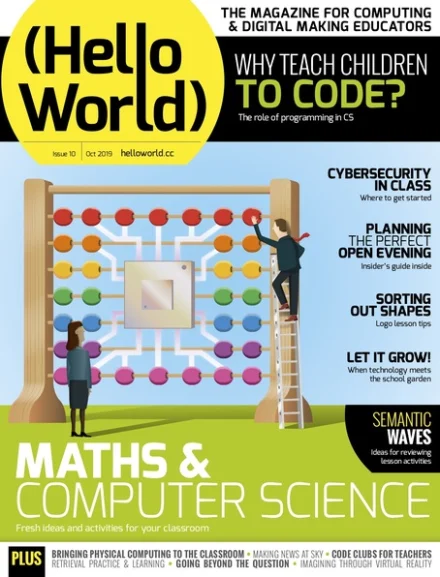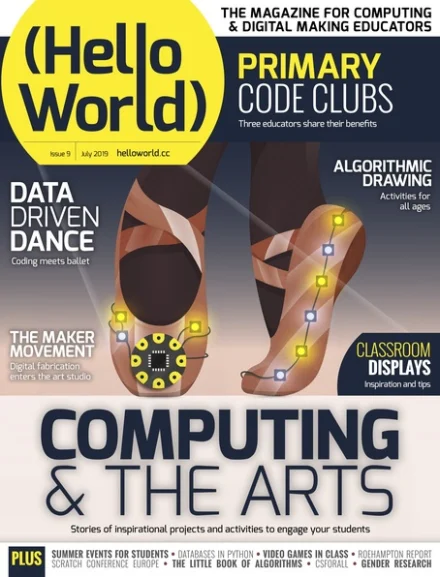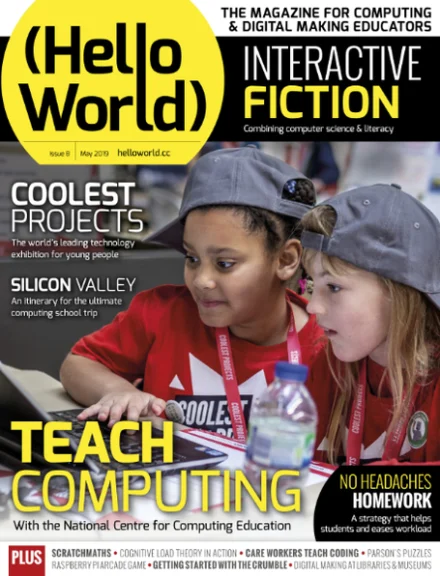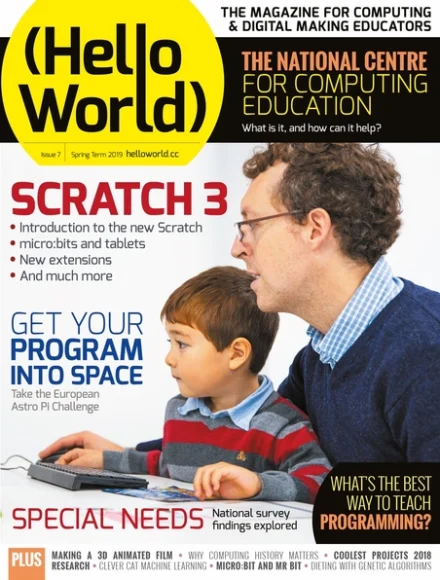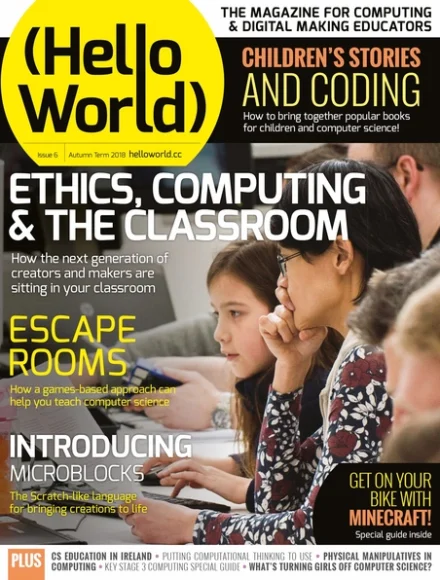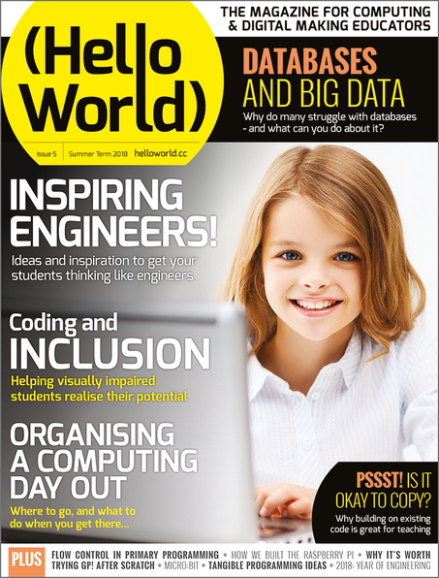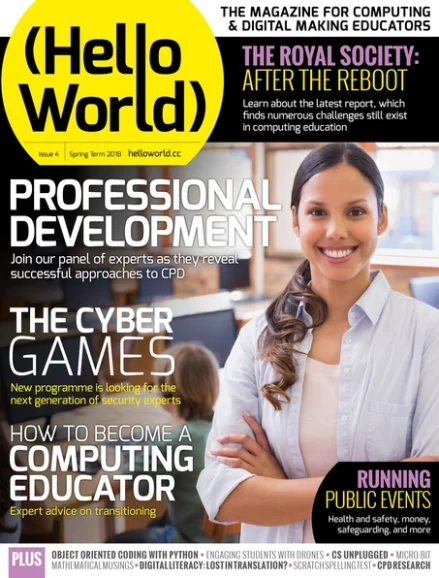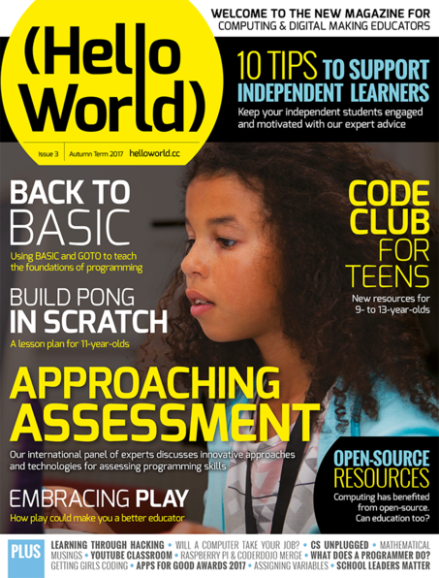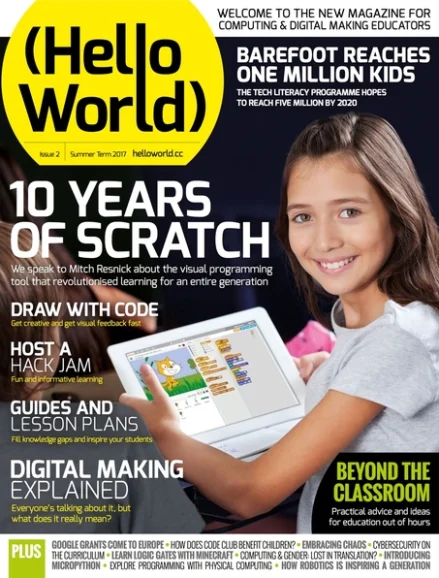
Issue 28 Programming
We take for granted all the clever, creative programming that goes into the technology we use in our daily lives. But how do we best teach programming to support the next generation of innovators?
In Hello World issue 28, educators explore a range of topics related to teaching programming, such as how to help students transition from block- to text-based programming; stepping into the role of computer science educator with little to no prior programming experience; and insights from an introductory programming course which encourages working with, and not against, generative AI tools. This issue is packed with insightful research, practical advice, and thoughtful ways to best teach programming in your classroom.
Past issues
Special editions
-
The Big Book of Computing Content

Hello World’s second special edition is here! Whilst our first special edition focused on how we can teach computing, The Big Book of Computing Content focuses on what we can teach. From data and information, to the effective use of tools, to artificial intelligence, The Big Book of Computing Content explores what we mean by computing and aims to provide a common language to describe the different areas of study and competencies, giving you an indispensable companion to understanding the breadth of knowledge contained within this constantly evolving subject. This book complements our first special edition and, as such, it follows the same principle of introducing you to up-to-date research followed by our favourite stories from past Hello World issues, in which educators like you have put that content into practice.
-
The Big Book of Computing Pedagogy
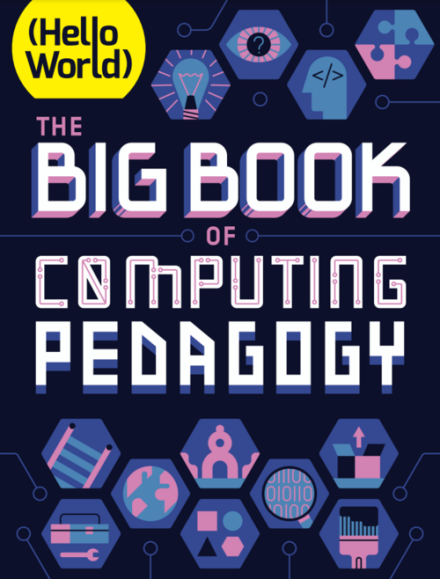
The Big Book of Computing Pedagogy: Hello World’s first-ever special edition focuses on approaches to teaching computing in the classroom, and includes some of our favourite pedagogically themed articles from previous Hello World issues, as well as a couple of never-seen-before features. This special issue aims to be your companion to learning about tried-and-tested approaches to teaching computing. It bridges the gap between research and practice, giving you accessible chunks of research, followed by stories from trusty educators who have tried out various approaches in their classroom or educational space.
